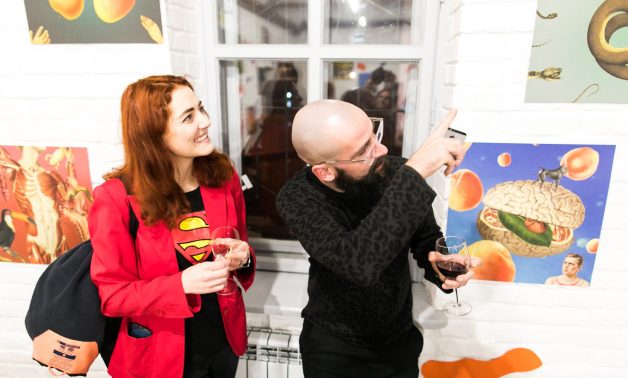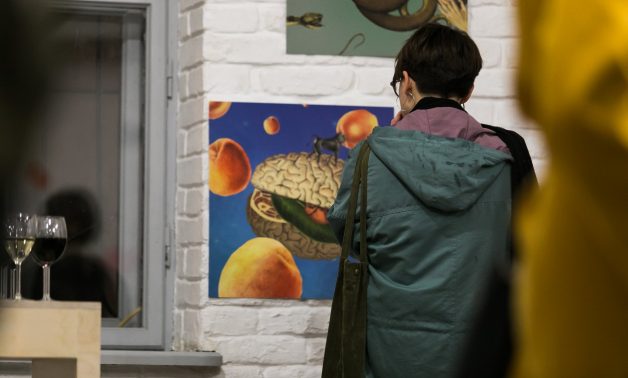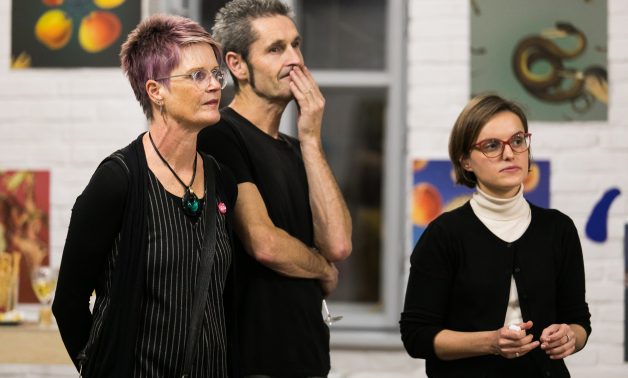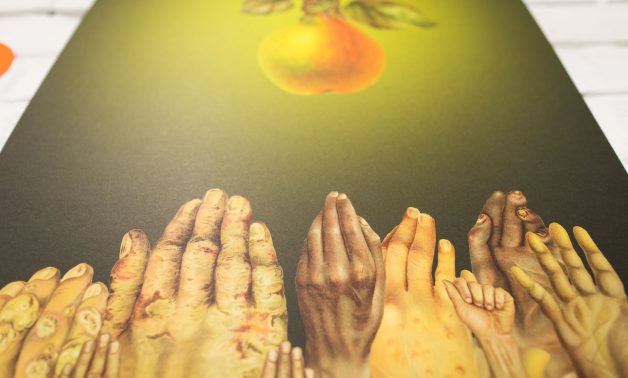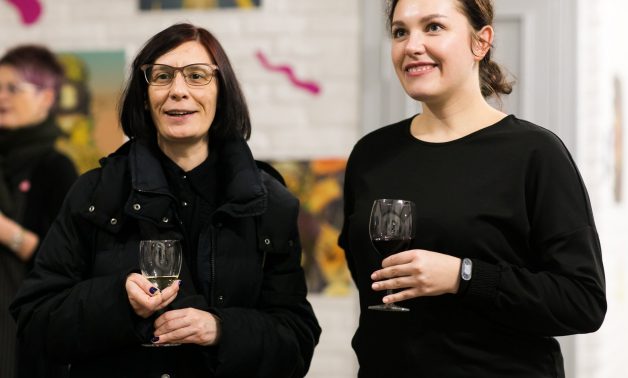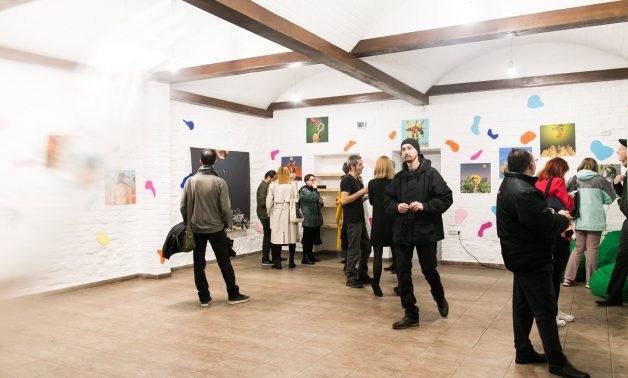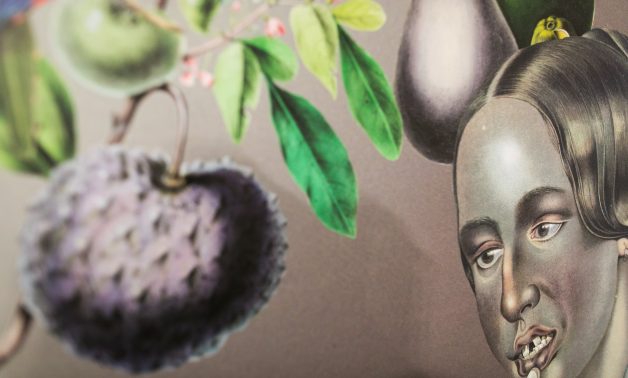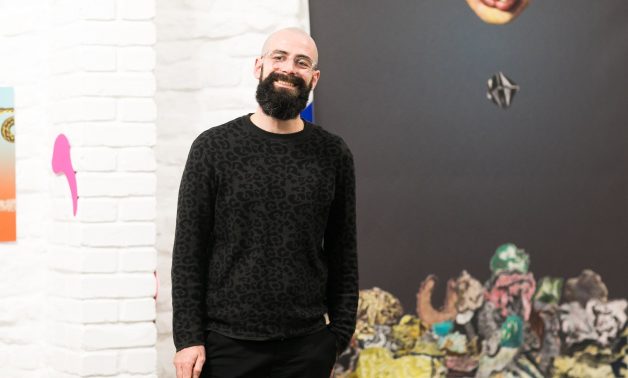The author of the exposition Maciej Bohdanowicz (1984) is a PhD in Visual Arts and the lecturer in Strzemiński Academy of Fine Arts in Łódź (Poland). As an artist he works with digital graphics and photography. His works were exhibited at group and solo exhibitions in Poland, Italy, Germany, Ukraine, Romania and Albania. You may also find his works in the collection of the Center for Contemporary Art in Turin (Italy).
In the series of collages “Gardens of Delights” Maciej Bohdanowicz makes use of archival photo portraits, images of flora, fauna and mushrooms; he combines them into compositions, and some of them are typically iconographic. Thus, cultural contexts, time markers and elements of the biosphere form new models of the garden world – unexpected, ironic, bizarre, and ambiguous. The artist builds up his numerous works into one collage in such a way that the visitors of the exposition inevitably dissolve in his bright garden of fantasies and associations. Those exact themes and moods are demonstrated in Maciej’s exhibition at Jam Factory Infopoint in Lviv.
Maciej’s Garden represents a symbolic form of the world. One can find the structural meaning and observe the metamorphosis that takes place within this structure. However, each garden is also a result of artificial arrangement, an act of creative interference into the edicts of nature.
“Gardens of Delights” is an alternative to the classical vision of the garden. The art works of this series unveil the former natural history archives and catalogs, male and female representations and the images of carnal defects and diseases to shed light on the uneasy order of art and medicine. Each garden is also a world in itself.
The collage technique introduces confusion to the existing discourse: people, plants, and animals are extracted from the current context in which each and every object used to be an ideal or falsified representation of reality. Images put together in fanciful compositions do not only change their original meanings, but also build new aesthetic worlds.
Once these elements are separated from the original background and introduced into the new space, they begin to look comical. Objects cease to be what they seemed to be so far: fruits are no longer a part of nature, animals now resemble people, and human bodies can be mistaken for the structures of some minerals. […] “Gardens of Delights” is the aesthetic intrusion; its major goal is to liberate the image from the social, historical and even political contexts of today’s world.
“Gardens of Delights” becomes a new vivifying space for archival, forgotten and unwanted images. Collages emancipate the corporeality and materiality of the world in every possible manifestation, so that the viewers would feel free to tell their own story of desires and fears. Nowhere else but exactly here, in the Garden, corporality and materiality become a form of alternative pleasure.
(From the curatorial annotation of Konrad Siezputowski)


